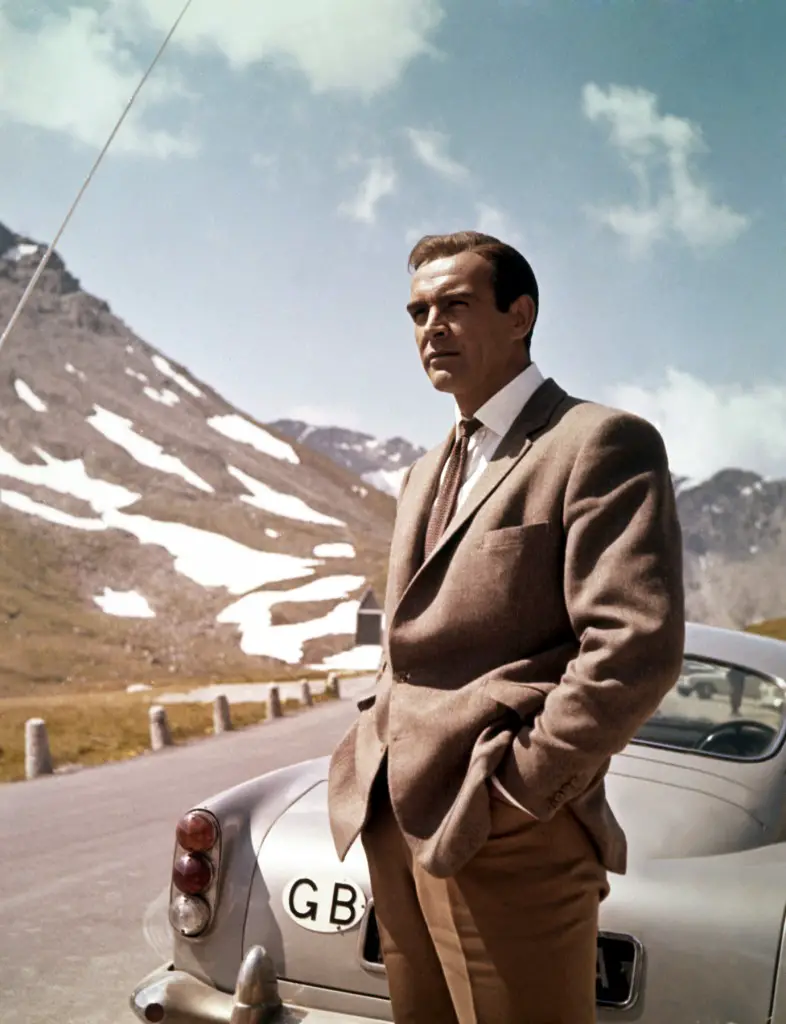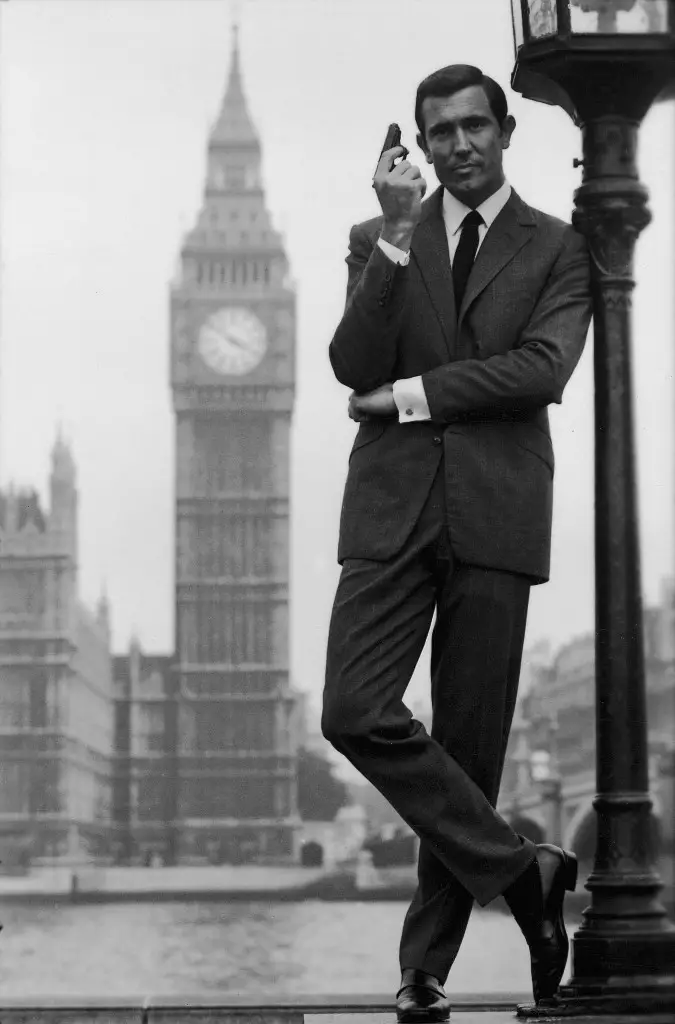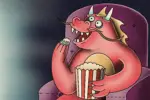In 1962’s Dr. No, Sean Connery introduced the world to an icon. A British superspy every bit as charming as he was deadly. A man with a weird obsession for shaken martinis and a knack for bedding beautiful women with astounding bravado. His name is Bond, James Bond, and the character’s adventures have been a staple in the spy genre for over 50 years.
Bond’s sturdy foothold in mainstream cinema shows how his character resonates strongly with audiences everywhere. He’s arguably the most recognizable of any movie character, which is odd, given that six different actors have donned the signature tuxedo. I mean, there’s only been one Darth Vader and one Indiana Jones, but we’ve witnessed six variations of Bond over the course of 23 movies. Not many characters could have survived that long, but Bond is a rare exception.
That doesn’t mean Bond never evolves. Quite the opposite actually. Bond always adapts to the time period he’s in, and almost always takes into consideration what came before. If the previously released Bond movie was criticized for being too serious, the next one is packed with humor.
 If the previous movie was too silly, producers would make sure to add dramatic weight next time. It’s a constant cycle of moving the series in one direction before audience backlash shifts it the other way. In many ways, Bond is just a reflection of what the audience wants to see in its heroes.
If the previous movie was too silly, producers would make sure to add dramatic weight next time. It’s a constant cycle of moving the series in one direction before audience backlash shifts it the other way. In many ways, Bond is just a reflection of what the audience wants to see in its heroes.
Which brings us to the current problem with the series: this generation is hurting Bond’s legacy. The character of James Bond has always been a debonair superspy, but that doesn’t work anymore—modern audiences need something deeper. There’s no such thing as a perfect hero in cinema anymore, because this generation likes their protagonists flawed.
Daniel Craig’s tenure as Bond has been met with plenty of justifiable praise, but his whole character can be summed up as a broken orphan, incapable of love, constantly fighting to prove his old school spy methods fit into a post-modern world.
It makes for compelling movies, but it wasn’t what Bond started out as. This certainly never happened to the other guys. To gain a better understanding of Bond’s rich history, I needed to do more research. I wanted to become well versed in the Bond cinematic universe, so I could examine what he started out as compared to what he is now. To do this, I issued myself an epic challenge. I vowed to watch every Bond movie ever to get a better definition of his character.
I prepared for this historic Bond-a-thon by only drinking martinis and enviously looking at my neighbor’s Aston Martin. Once my liver started hurting and my neighbor shooed me away with his garden hose, I knew I was ready.
I pondered the tough questions any Bond-connoisseur should contemplate: What is the power source behind Sean Connery’s animal magnetism? Who the heck is George Lazenby? What would a Bond villain actually do if they conquered the world? Why does no one ever just shoot Bond right away? Are they afraid his blood has turned to pure alcohol at this point and shooting him will ignite a tremendous fireball? Important questions like that.
Connery Sets the Mood
To many, Sean Connery is the James Bond. The man radiated charm and charisma (I’m not jealous or anything). His performance in Dr. No would set the standard for everything that came after. Every other actor called upon to take up the James Bond mantle brought something new, but all honor the spirit of Connery’s Bond in some way.
Connery’s Bond was a larger-than-life character. He was a 1960’s superhero before Hollywood could afford to make superhero movies. He was the only one standing in the way of the ridiculously evil SPECTRE organization, and he faced them down with a defiant grin. You never really understood what drove Connery’s Bond, but it was always fun watching him work.
As Connery’s reign continued, the series hit its first major obstacle in the fourth Bond film, Thunderball. It started to embrace a very tongue-in-cheek attitude. The movie opens with Bond punching a woman in the face, who turns out to be a man in disguise. The two fight to the death with Bond emerging victorious, and then he flies away on his handy-dandy jetpack. It’s a lot of fun, but it highlights how the franchise was pushing the series into increasingly ridiculous situations.
Lazenby Adds Weight
After 1967’s You Only Live Twice pushed Bond further into comedic territory, it was clear that they needed a new direction. A fresh start became easier when Connery decided to step down from the role, forcing producers to find someone who could fill his very large shoes. They cast a relatively unknown model-turned-actor named George Lazenby, and made sure the next Bond film, 1969’s On Her Majesty’s Secret Service, carried more dramatic weight than the previous films.
All the trademark Bond tropes are present in Lazenby’s film. He still doles out pun-tastic one-liners every chance he gets, performs insane stunts and woos plenty of women, but it ends on an extremely dark note. He ends up falling madly in love with one of the Bond girls he seduces, and the two get married and drive off into the sunset together.
Their happiness is short-lived when Bond’s nemesis Blofeld drives by and guns down Bond’s new wife. Bond cries over her dead body. Roll credits. It’s an incredibly dark anomaly, and completely stands apart from any other ending in the franchise. I see it as the producers testing the waters to see if they could make Bond more complex.
The gamble didn’t pay off. Lazenby proved difficult to work with and chose not to return, making him the only one-and-done Bond of the franchise. At this point, producers seemed to panic. They looked afraid of taking Bond to darker places and pulled back.
They coaxed Connery to return with a then-record $1.25 million and gave him another wacky adventure in 1971’s Diamonds Are Forever. It involved a space laser powered by diamonds that threatened the entire world. It’s one of the worst Bond films in the franchise. You could have taken Austin Powers, placed him in the film instead of Bond, and the movie would have played out mostly the same way.
There’s no mention of Bond’s wife, but it begins with the character obsessively looking for Blofeld. It’s like filmmakers wanted to retain some semblance of semi-continuity, but at the same time never talk about Lazenby’s movie again. At this point, it became clear that Bond’s biggest enemy wasn’t a power-mad villain, but rather a studio that could never decide if they wanted a serious Bond or a campy Bond.
Moore Is Less
After the atrocity that was Diamonds Are Forever, the franchise thankfully received a major facelift. Connery declined to return (again), and producers tested a wide range of different actors.
Most interestingly? Clint Eastwood was offered the role, but turned it down. While Eastwood would have brought a harder edge to Bond, the idea of an Americanized James Bond is a little frightening. Roger Moore was tapped to replace Connery, and he became the new face of the franchise for twelve long, mediocre years, starring in a record-setting seven Bond films.
In his time as Bond, Moore fought evil witch doctors, men with golden guns, ridiculously over-powered henchmen and Christopher Walken. He traveled from gritty Harlem streets to lavish Indian monuments to the icy blackness of outer space. Nothing was too far-fetched for Moore’s Bond, and he did it all with a dash of charm and a small smile. Moore softened the dangerous edge developed by Connery’s Bond and was a light-hearted hero throughout his run.
In the end, Moore’s Bond still suffered the same fate as Connery’s 007. Again, the franchise was sliding back into campy territory. It went too far in 1985’s A View to a Kill, a very silly movie with the silliest name (seriously, why is there an extra ‘a’ in there?) that involved microchips and a fiendish plan to destroy Silicon Valley.
At this point, a pattern started emerging. Both Connery and Moore started off strong, but floundered in their final films. At this point, it seems impossible for a Bond actor to end on a high note.
*Technically, actor Timothy Dalton starred in two Bond movies after Moore and before Brosnan, The Living Daylights and License to Kill, but they sucked, so I made the decision to skip him and give more room to the others. -JB*
Brosnan Plays the Action Hero
Pierce Brosnan will always be my James Bond. He took over the role when I was kid and he’s my first association with the character. Every day after school I would play the N64 versions of The World is Not Enough and Goldeneye with friends until my competitive nature turned them into enemies. I loved Brosnan’s movies as a kid, so that’s why I was afraid to revisit the Brosnan era with a more critical eye. Turns out my fear was justified.
As I made my way through the movies, I felt my inner child die under the weight of empty action sequences and poor plotting issues. The nineties represent the rise of CGI, and the Bond franchise utilized it way too much with Brosnan. They were loud and flashy, but lacked anything meaningful. This was the period that turned Bond back into a bonafide action hero, but at the cost of depth and quality.
The character went through another major transformation during this era. Instead of Britain’s golden boy, Bond developed a hint of a rogue streak. As modern audiences grew to like characters who fought outside the establishment and bent the rules to do what was right, Bond changed to fit that mold.
It’s an interesting contrast to watch earlier films where Bond had complete support from his superiors no matter what, and then compare that to Brosnan’s Bond. His character was forced to quit and go outside the law in order to save the world. It was his most radical change yet.
Unfortunately 2002’s Die Another Day, Brosnan’s last film, drove the series into the ground with a resounding thud. It was an incoherent, sloppy excuse for an action film that relied too much on special effects. It was like Bond was playing a macho parody of himself.
The series once again became too campy for its own good and the character of Bond became somewhat of a joke. The only good thing about Die Another Day is that it laid the groundwork for the best Bond reboot in the franchise. Enter Daniel Craig.
Craig Goes Dark
Sean Connery’s Bond could not exist today. He’s too perfect, a remnant of a different time. There’s no such thing as an absolute good guy in movies anymore. Everyone has shades of grey. Even traditionally perfect characters like Superman have to be infused with inner angst and given tough moral dilemmas to appease today’s masses. James Bond has always been a character capable of great depth, but this time period is the first to really explore the inner workings of the character.
What drives the superspy to save the world time and time again with dogged persistence? How come nothing fazes him? Why does he feel the need to sleep with every beautiful woman even though he for sure is riddled with STDs?
For 20 films these issues had never been addressed, waved off as nothing more than “he’s just really cool.” That all changed with 2006’s Casino Royale, which answered all those questions with a tragic answer: it’s because he’s broken.
I mentioned earlier that this generation likes their movie characters with a bit of grit, and being part of this generation, I’m not afraid to call Casino Royale the best James Bond ever. It takes the Bond character in a completely new direction by attempting to define him. The trademark Bond swagger is replaced by arrogance and an inflated ego. He only likes to sleep with married women because he isn’t capable of truly loving anyone.
This was a great place to take the character, but it’s what they did after that started to hurt Bond’s legacy. Quantum of Solace drives him further into antihero-territory, as he is fueled by cold vengeance rather than the desire to save the world. By the time Skyfall arrived, audiences had a pretty good idea how this Bond operated.
He was highly flawed and his charm stemmed from his coldness. While Connery, Moore and Brosnan seemed to relish life, Craig seemed haunted by it. Skyfall continued the trend of examining Bond’s psyche by exploring his childhood.
Here we learn Bond was an orphan, who was recruited and trained to become a deadly agent against evil. Yes, James Bond is now basically Batman. It’s a great character arc for Bond, one that will no doubt be further discussed in the upcoming installment, but it’s so far off-base from what Bond started as that he’s practically unrecognizable. This not only spits in the face of Bond’s long film history, but burns all bridges when it comes to future installments.
Bond’s Bleak Future
On their own, Craig’s Bond movies are fantastic. They walk the line perfectly between quality drama and fun adventure films, but as a link in the Bond chain, they present serious problems. Bond has always been a character who changes and evolves with the times, but now he can’t do that.
Although they were very different, Connery, Moore and Brosnan had one thing in common: they had no backstory. It allowed the character to easily reinvent himself every few years. Now that Bond’s past is almost completely filled out, it ties the hands of future films.
When Daniel Craig decides he’s done wearing the tuxedo, what happens? They’re going to have to go with a younger actor, which wipes away the big themes questioning the superspy’s relevance in the post-modern world. They’ve worked so hard in making this era of Bond films rich cinematic experiences that it spoils anything that comes next.
We can’t have the perfect hero like Connery, the easy rider like Moore or the corny action hero like Brosnan anymore. They’re not deep enough. Bond had survived this long because his character had remained largely undefined, but now they’ve fleshed him out so much that he can’t adapt anymore. We are living in the golden age of Bond movies, but we better not take it for granted. After Craig’s done, it’s going to be difficult for the franchise to continue.


















It’s even more interesting to read how the Bond character changes throughout the original book series. He starts off working pretty close with American agencies, but as the cold war progressed in real history and the US/UK relationship soured, you can see that reflected in how Bond acts with his friend Felix.